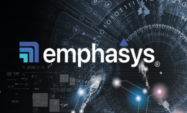SAP Application Development and Integration
SAP ABAP | SAP ABAP Development Tools | SAP ABAP Test Cockpit | SAP API Management | SAP BAPI | SAP Basis | SAP BRF | SAP Business Application Studio | SAP CMS | SAP Design Studio | SAP Development Tools | SAP DevOps | SAP EAI | SAP EDI | SAP Extension Suite | SAP Fiori | SAP Fiori Elements | SAP Integration Suite | SAP Low Code Application Development | SAP Low Code Automation | SAP Netweaver | SAP Release Management | SAP UI5 | SAP Web Application Server | SAP Web IDE
Filter By
Browse By
- SAP Analytics and AI
- SAP Application Development and Integration
- All SAP Application Development and Integration
- SAP ABAP
- SAP ABAP Development Tools
- SAP ABAP Test Cockpit
- SAP API Management
- SAP BAPI
- SAP Basis
- SAP BRF
- SAP Business Application Studio
- SAP CMS
- SAP Design Studio
- SAP Development Tools
- SAP DevOps
- SAP EAI
- SAP EDI
- SAP Extension Suite
- SAP Fiori
- SAP Fiori Elements
- SAP Integration Suite
- SAP Low Code Application Development
- SAP Low Code Automation
- SAP Netweaver
- SAP Release Management
- SAP UI5
- SAP Web Application Server
- SAP Web IDE
- SAP Business Process Management
- SAP Center of Excellence
- SAP CIO
- SAP Customer Experience
- SAP Data and Data Management
- All SAP Data and Data Management
- SAP BW
- SAP BW/4HANA
- SAP Crystal Reporting
- SAP Data Archiving
- SAP Data Center
- SAP Data Governance
- SAP Data Integration
- SAP Data Migration
- SAP Data Quality
- SAP Data Services
- SAP Data Strategy
- SAP Data Visualization
- SAP Data Warehouse Cloud
- SAP DMS
- SAP Document Control
- SAP EIM
- SAP ETL
- SAP ETL Tools
- SAP HANA
- SAP HANA Administration
- SAP HANA Deployment Infrastructure
- SAP HANA Studio
- SAP Master Data
- SAP Master Data Governance
- SAP MDM
- SAP Enterprise Architect
- SAP Enterprise Asset Management
- SAP ERP
- SAP Finance
- All SAP Finance
- SAP Accounting
- SAP AR AP
- SAP Asset Accounting
- SAP Billing Systems
- SAP BPC
- SAP BRIM
- SAP Cash Management
- SAP Central Finance
- SAP Controlling
- SAP COPA
- SAP Cost Center Accounting
- SAP e-invoicing
- SAP FICO
- SAP Finance Automation
- SAP Financial Closing Cockpit
- SAP Financial Consolidation
- SAP Financial Planning
- SAP FX Risk
- SAP General Ledger
- SAP Global Tax Management
- SAP Hyperion
- SAP Order to Cash
- SAP Payment Processing
- SAP Profitability Analysis
- SAP Rebate Management
- SAP S/4HANA Finance
- SAP Universal Journal
- SAP Governance Risk and Compliance
- SAP Human Capital Management
- SAP Intelligent Technologies
- SAP Platform and Technology
- All SAP Platform and Technology
- SAP Business Technology Platform
- SAP Cloud Connector
- SAP Cloud Integration Platform
- SAP Cloud Migration
- SAP Cloud Platform
- SAP Cloud Providers
- SAP Cloud Strategy
- SAP Container Platform
- SAP Digital Asset Management
- SAP Digital Integration Hub
- SAP Digital Signature
- SAP HANA Enterprise Cloud
- SAP HEC
- SAP Hyperscalers
- SAP Infrastructure
- SAP Messaging
- SAP Smart Forms
- SAP Quality and Testing
- SAP Security
- SAP Spend Management
- SAP Supply Chain Management
- All SAP Supply Chain Management
- SAP APO
- SAP Asset Management
- SAP Business Network
- SAP Digital Manufacturing Cloud
- SAP Digital Twin
- SAP EWM
- SAP IBP
- SAP Inventory Management
- SAP Label Printing
- SAP Logistics
- SAP Manufacturing
- SAP Manufacturing Automation
- SAP MES
- SAP MII
- SAP MM
- SAP MRO
- SAP MRP
- SAP Order Management
- SAP Plant Maintenance
- SAP PLM
- SAP Production Planning
- SAP S&OP
- SAP SD
- SAP SPM
- SAP Supply Chain Planning
- SAP Track and Trace
- SAP Transportation Management
- SAP System Administration
SAP Application Development and Integration
For success and for even survival, today’s companies must develop and roll out applications, with high quality, user experience, and integration, while minimizing risks associated with the rapid development and deployment of applications.
SAP Application Development and Integration
For success and for even survival, today’s companies must develop and roll out applications, with high quality, user experience, and integration, while minimizing risks associated with the rapid development and deployment of applications.
SAPinsider’s benchmark report on Application Strategies and Development for SAP S/4HANA and Cloud discovered that found that the top driver for application strategy is the need to maintain or improve business processes rapidly to support changing needs (50%). The next important driver is the continued demand for SAP and non-SAP applications that connect to core SAP (36%).
Understanding this burgeoning need for developing applications, SAP has bundled several tools in the SAP Extension Suite and SAP Integration Suite which are part of the SAP Business Technology Platform (SAP BTP).
To deliver the value proposition, SAP Extension Suite includes components such as SAP AppGyver for low-code development, SAP Business Application Studio for extending business applications, SAP Conversational AI for voice and bot applications, SAP Mobile Development Kit (MDK) for mobile applications, SAP native SDKs for iOS and Android as well as the SAP Fiori design system and design platform for pre-built common applications for thousands of use cases.
This valuable article Extend Your Core Business Applications and Drive Your Business Forward with SAP Extension Suite outlines the various ways in which SAP Extension Suite provides extensibility and walks through the various steps in the process of utilizing it.
ABAP code forms the bulk of the legacy customizations and extensions. As part of SAP BTP, ABAP environments provide ways to develop using the ABAP RESTful Application Programming Model (RAP), leveraging SAP HANA, SAP Fiori, and a cloud-optimized ABAP language with a clear set of released standard APIs. Developers can utilize a development toolset that enables tight integration with Git-enabled lifecycle management that includes ABAP ABAP editors, dictionary, UI painters, function, class, and web app builders.
Skills are always a major issue in development as the above-mentioned report found. SAP Extension Suite offers options of different technologies and programming languages through various options and runtime environments are available on the SAP BTP: ABAP environment, Cloud Foundry runtime, and Kyma runtime.
Almost half of the respondents in SAPinsider research on Application Strategies and Development for SAP S/4HANA and Cloud are planning or evaluating low-code platforms. There is an expectation of significant impact from these platforms such as ability to deliver applications rapidly, reduced IT costs, and enabling industry standards. Read the article “Governance for Low-code Platforms” on recommendations on governance for low-code platforms.
There is an exciting range of applications that are possible in today’s platforms. Companies like ServiceNow and Pillir.io provide a significant set of prebuilt apps in their low-code platforms. Consultants such as Cognizant, cbs Consulting, Capgemini, and TechMahindra can provide the expertise to drive innovation.
What is SAP Integration?
Establishing a single hub of information is vital to arm business leaders at any organization with the real-time information they need to make the decisions that will benefit their organization the most. While IT teams can manually create some connections, integration platforms are often favored as the solutions to keep all facets of the business connected.
These platforms have significant experience in ensuring that data flows throughout the business to the appropriate points while remaining accurate, accessible, and up-to-date. Organizations should ensure that they keep integration in mind when incorporating new applications and systems into their overall SAP landscape.
Organizations should ensure that all solutions they adopt can become part of a consistent software architecture that will accommodate any changes to business processes, new applications, and technological upgrades.
Some business processes require SAP to connect with multiple systems that communicate with SAP in slightly different ways. These systems can function together, as long as the company is able to find an integration layer that goes in between SAP and these systems, allowing the data to flow freely around the entire SAP landscape.
Why is SAP integration important?
SAP integration is vital for organizations across all industries. Nearly half a million organizations use SAP. Their reach extends to more than three quarters of all transactions between business and customers around the world. The massive scope of SAP powers global commerce. To make the most of this scale, organizations must integrate their SAP software and applications to the rest of their system, including their ERP.
Many organizations are turning more towards Software as a Service (SaaS) applications such as Salesforce to help manage business processes. Companies should be aware that the mixture of on-premise and cloud applications can pose a challenge for integrations, and factor that potential issue into any decisions made about which solutions or services they decide to leverage.
SAP Application Integration: Use Cases
Integration is important for all SAP applications to pair with non-SAP applications. Yet there are certain specific scenarios, systems, applications, and functions in which SAP integration is most common. These scenarios are:
CRM applications: Customer Relationship Management is one of the most vital functions of a consumer-facing business. As such, organizations must ensure that they have tight integration between their CRM systems and their ERP systems. Ensuring that customer data is consistent can help avoid improve overall business agility. To do this, organizations need to have a consistent pipeline of information between CRM systems and ERP systems so that financial, performance, and other business data is easily accessible from all parts of the business.
Supplier systems: Just as businesses must have accurate and up-to-date information for their customers, they must also have that same data for vendors. Staying on top of purchase requests, ensuring that all potential suppliers know what raw materials a business needs, and having a single source of truth for all quotes keeps all financial information accurate and ensures continuity through the supply side of the business.
Third party purchase order systems: While it is important to integrate all applications within ones own business, it is also important to set up a system to communicate with partners, such as third parties who operate purchase order systems. Integrating with these valuable organizations can help streamline new purchase orders, automatically enabling businesses to buy necessary materials while keeping all facets of the organization up to date on the process.
Join SAPinsider to access opportunities for networking and engagement in the dynamic SAP ecosystem. As a member, you will have access to a wealth of valuable resources and content tailored to SAP technologies and best practices like the latest research reports, articles, webinars, and events that will keep you informed and ahead of the curve.SAPinsider membership grants you exclusive access to in-depth analyses, expert insights, and practical guidance that will empower you to navigate the ever-evolving SAP landscape with ease. SAPinsider membership will enable you to remain one step ahead and harness the latest trends, innovations, and strategies to drive your own powerful digital transformations, optimize your SAP investments, and unlock business success.
42 results
-

Data drives CX for Toyota Financial Group with Boomi integration
Published: 28/September/2024
Reading time: 3 mins
With tangled APIs and integrations, Toyota Financial Services Group picked Boomi to help centralise its data and improve customer experience.
-

Red Hat and Microsoft Azure Revolutionize Cloud Applications
Published: 21/July/2023
Reading time: 1 mins
Red Hat unveiled a series of enhancements to its JBoss Enterprise Application Platform (JBoss EAP) on Microsoft Azure. The upgrades include novel consumption models and clustering features that address the way enterprises build and manage applications in the cloud. The JBoss EAP on Microsoft Azure allows businesses to modernize their existing Jakarta EE applications and…
-

Hexagon and Fujitsu Collaborate for Resilient Cities with Predictive Tech
Published: 17/July/2023
Reading time: 2 mins
Hexagon and Fujitsu Limited teamed up to develop digital twin applications that predict and mitigate natural disasters and traffic accidents. Their collaboration builds upon their existing alliance formed in June 2022. The partnership focuses on a prediction model that utilizes precipitation data to calculate flooding extent, visualize flood areas, and analyze potential damage. These insights…
-
-

Tricentis Enhances Mobile Testing with Waldo Acquisition
Published: 11/July/2023
Reading time: 1 mins
Tricentis, a leader in continuous testing and quality engineering, acquired Waldo, a SaaS-based mobile test automation platform that requires no coding. The move aims to enhance Tricentis’ mobile testing offerings by incorporating new capabilities for native, hybrid, and web mobile application testing using virtual devices that support iOS simulators and Android emulators. Mobile applications have…
-

Why the TypeScript Sheriff has Come to Clean up your JavaScript
Discover how TypeScript, a strongly typed superset of JavaScript, offers a solution to reduce runtime errors while preserving the dynamic and expressive nature of JavaScript. In this session, explore simple examples that demonstrate the benefits of TypeScript and learn how it seamlessly integrates with SAP technologies like SAP UI5, CAP for Node.js, and the SAP…
-

Unlocking SAP’s Full Potential: Why Prioritizing User Experience is Critical in Today’s Business Landscape
Discover how prioritizing user experience (UX) can unlock the full potential of SAP, addressing challenges in implementations, user adoption, and return on investment (ROI). By emphasizing the importance of UX and creating frictionless technology, businesses can achieve optimal performance, even in the face of budget cuts, reduced headcount, and distributed workforces. This session explores the…
-

Enhance End User Productivity with Powerful and Interactive Help Documentation
Published: 16/May/2023
Reading time: 4 mins
Program documentation is an essential but often overlooked facet of any business that functions properly. Noting and storing business process information can help reduce knowledge gaps and enhance programmer productivity. In this article, SAPinsider expert Vanda Reis will go over some tips and tricks on how to add the end user documentation to the Z-Report…
-
-

SecurityBridge Dashboard Unveiled
Published: 20/March/2023
Reading time: 1 mins
SecurityBridge announced the introduction of its SAP Management Dashboard, an integrated application for its SAP Security Platform that provides real-time, customizable views and analyses of all SAP data through a single pane of glass.
-

Advancing Enterprise Integration is a Mission Critical Priority
Published: 09/March/2023
Reading time: 1 min
Enterprise integration is a top priority for CIOs, with 83% saying it’s a top-five business priority. However, only 27% of organisations report having a mature enterprise integration practice, with 55% in the process of pivoting towards it. To drive a shift towards a more holistic approach, 53% of organisations have created a dedicated team to…
-

Alternatives to SAP PI/PO
Published: 09/March/2023
Reading time: 5 mins
EAI facilitates communication between enterprise applications to move business data across various systems. SAP PO is a middleware often used by customers with SAP in their landscape. It provides various adapters to establish connectivity with various systems. SAP Integration Suite, MuleSoft’s Anypoint Platform, and Dell Boomi Atmosphere are all powerful Integration Platforms that offer prebuilt…
Become a Member
Unlimited access to thousands of resources for SAP-specific expertise that can only be found here.
Related Vendors
Your request has been successfully sent

